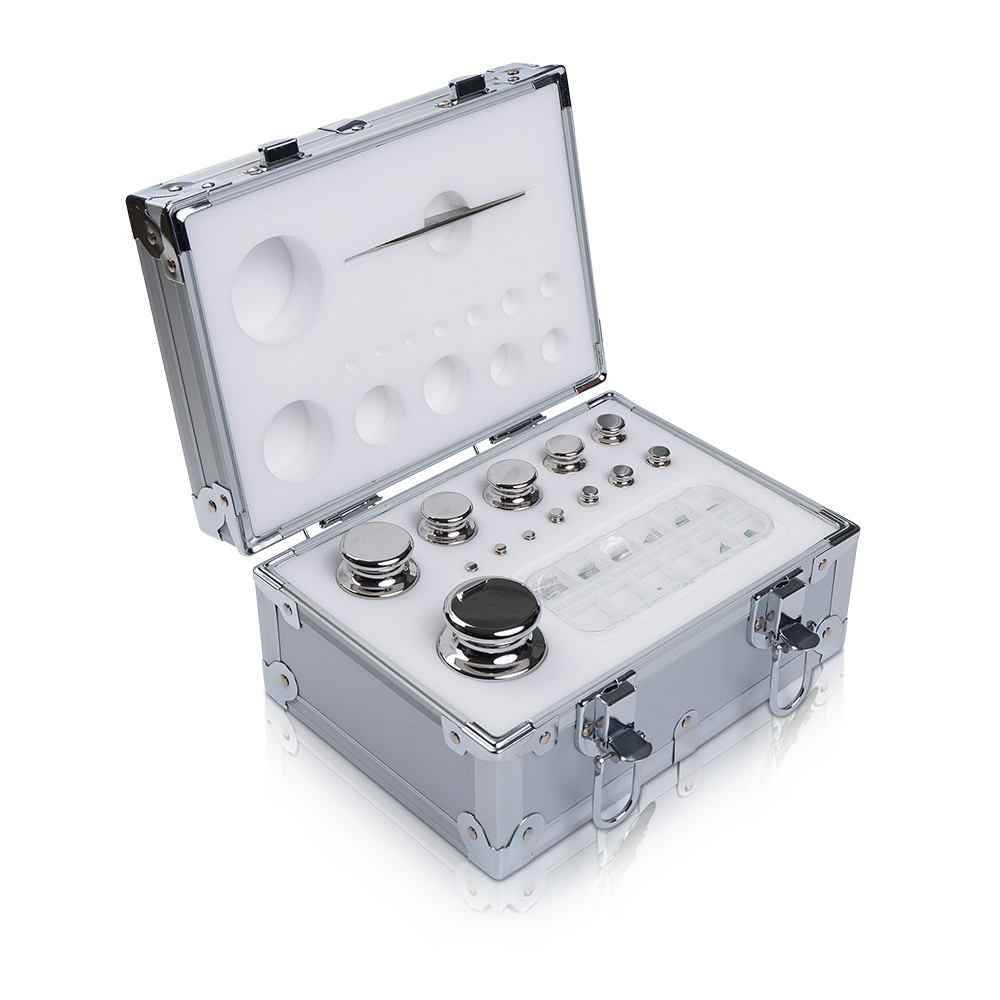The key to ensuring the consistency of the standard and accuracy of Laboratory Calibration Weights lies in the following aspects:
1. Follow international and national standards
International standards: The accuracy of calibration weights should meet international standards, such as the relevant standards of the **International System of Units (SI) or the International Organization for Standardization (ISO)**. Common standards include ISO 9001, ISO 17025, etc., to ensure that the accuracy, stability and consistency of weights meet international certification requirements.
National standards: In addition to international standards, each country may also have specific weight calibration standards. For example, the United States has relevant standards published by NIST (National Institute of Standards and Technology), and Europe has OIML (International Organization of Legal Metrology) standards. These standards provide clear technical requirements for the accuracy of weights.
2. Use high-precision, certified calibration weights
Choose certified calibration weights and ensure that the weights meet the corresponding national or international standards. These weights are usually produced and certified by qualified laboratories or institutions to ensure that they have high accuracy within the specified range.
Each weight should be marked with its tolerance range and error, and a calibration certificate should be provided to prove that it meets the standard requirements.
3. Regular calibration and verification
Regular calibration: In order to ensure that the weight maintains its accuracy over a long period of time, it must be recalibrated regularly. The calibration cycle can be determined based on the frequency of use, environmental conditions and the required accuracy requirements.
Calibration process: During the calibration process, the weight should be checked and adjusted by a certified laboratory to ensure that its quality meets the standard. During calibration, it is also necessary to verify the consistency of the weight with the known standard through comparative testing.
Environmental factors: Environmental factors (such as temperature and humidity) will affect the quality of the weight, so calibration needs to be carried out in a controlled environment.
4. Environmental control and proper storage
Weights should be stored in a constant temperature and low humidity environment to avoid mass changes caused by moisture, temperature differences or contaminants.
Dust and corrosion prevention measures should be taken during storage, such as using dustproof bags, sealed containers, etc., to avoid contamination or oxidation of the weight surface.
5. Use professional measuring equipment
Use high-precision balances and weighing equipment for measurement, and ensure that the measuring equipment itself meets international or national standards. The accuracy of the measuring equipment directly affects the calibration results of the weights, and the measuring equipment must be calibrated regularly.
Comparison measurement: For particularly precise weights, a comparison method (i.e., comparison with known standard weights) is required to verify their accuracy.
6. Keep calibration records and documents
Keep detailed calibration records and certification documents, including the initial calibration report, calibration certificate, historical calibration records, etc. of the weights. The records can trace the accuracy of the weights and the details of each calibration.
In this way, ensure that the standard and accuracy of each weight can be effectively managed and monitored to avoid errors beyond the allowable tolerance.
7. Cross-laboratory comparison
Carry out cross-laboratory comparisons, that is, compare the weights used by different laboratories to ensure that they meet consistent standards. This is usually done through international standards organizations to ensure data comparability between laboratories.
International laboratory accreditation (such as ISO/IEC 17025 accredited laboratories) can ensure the consistency and accuracy of all weights worldwide.
8. Training and operating specifications
Ensure that all operators are professionally trained on how to properly use, store and maintain weights to avoid improper operation that affects their accuracy.
Set operating specifications to ensure that operators perform appropriate checks and records before each use of weights to reduce human errors.
The standards and accuracy of Laboratory Calibration Weights can be ensured to be consistent by following international and national standards, regular calibration, maintaining appropriate environmental controls, using certified high-precision equipment and good record management. Continuous monitoring, verification and maintaining good maintenance habits are key factors in ensuring their long-term reliability.

 English
English















